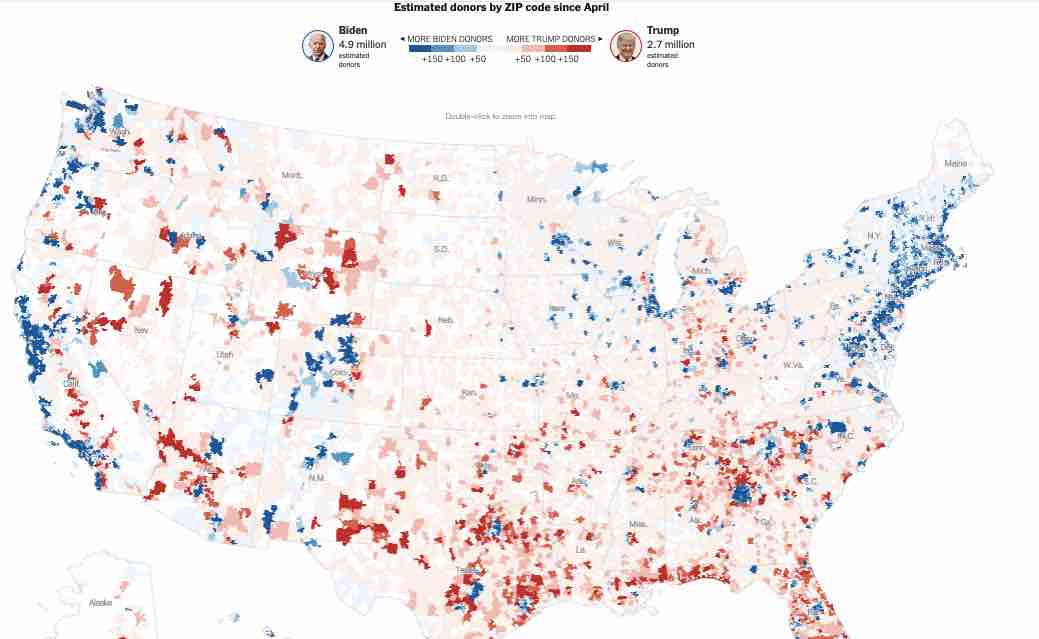. . .
It is not just that much of Mr. Biden’s strongest support comes overwhelmingly from the two coasts, which it does. Or that Mr. Trump’s financial base is in Texas, which it is. It is that across the country, down to the ZIP code level, some of the same cleavages that are driving the 2020 election — along class and education lines — are also fundamentally reshaping how the two parties pay for their campaigns.
For years, affluent and college-educated voters, mostly white, had been the base of the Republican Party. Exit polls showed Republicans winning college graduates nationally from 1988 to 2004, and again in 2012. Voters who earned at least $100,000 have historically sided with most Republican presidential candidates by comfortable margins, too.
But under Mr. Trump, Republicans have hemorrhaged support from white voters with college degrees, who polls show have been repelled by his embrace of a politics of cultural division and racial grievance.
The fund-raising data suggests that erosion is not only harming the party’s electoral prospects but also its economic bottom line.
Mr. Trump lost the money race in 2016, too, but he mobilized a base of white working-class voters then that offset his losses among college-educated voters. Now he is trying to leverage the powers of incumbency to do that to an even greater degree. But win or lose, Mr. Trump has accelerated a political realignment.
In ZIP codes with a median household income of at least $100,000, Mr. Biden smashed Mr. Trump in fund-raising, $486 million to only $167 million — accounting for almost his entire financial edge. In the rest of the country, the two were knotted closely together.
Read new article




